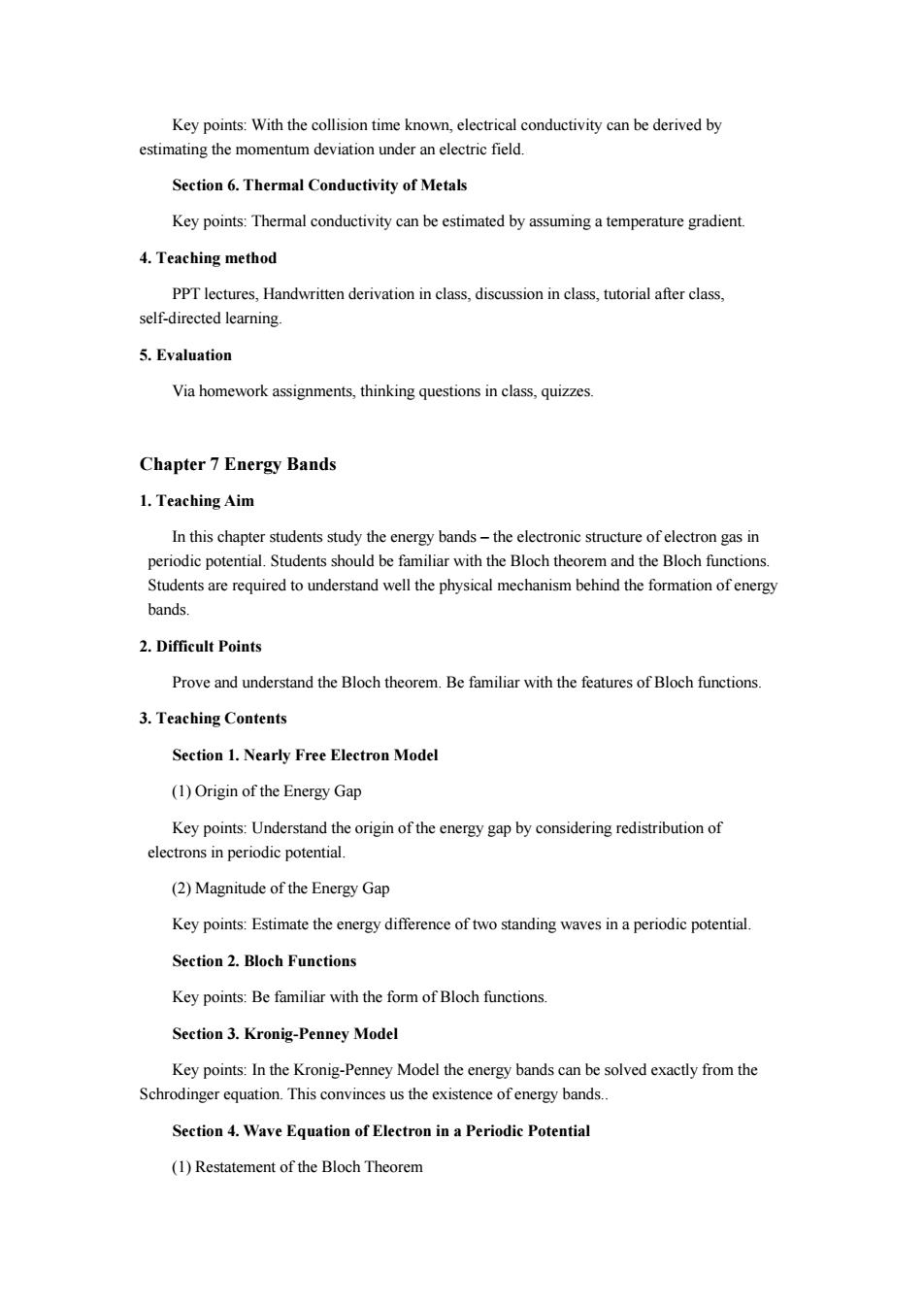正在加载图片...

Key points:With the collision time known,electrical conductivity can be derived by estimating the momentum deviationunder an i field. Section 6.Thermal Conduetivity of Metals Key points:Thermal conductivity can be estimated by assuming a temperature gradient 4.Teaching method self-directed learning. 5.Evaluation Via homework assignments,thinking questions in class,quizzes. Chapter 7 Energy Bands 1.Teaching Aim In this chapter students study the energy bands-the electronic structure of electron gas in and the Bloch functions bands. 2.Difficult Points Prove and understand the Bloch theorem.Be familiar with the features of Bloch functions 3.Teaching Contents Section 1.Nearly Free Electron Model (1)Origin of the Energy Gap Key points:Understand the origin of the energy gap by considering redistribution of electrons in periodic potential. (2)Magnitude of the Energy Gap Key points:Estimate the energy difference of two standing waves in a periodic potential. Section 2.Bloch Functions Key points:Be familiar with the form of Bloch functions. Section 3.Kronig-Penney Model Key points:In the Kronig-Penney Model the energy bands can be solved exactly from the Schrodinger equation.This convinces us the existence of energy bands Section 4.Wave Equation of Electron in a Periodic Potential (1)Restatement of the Bloch Theorem Key points: With the collision time known, electrical conductivity can be derived by estimating the momentum deviation under an electric field. Section 6. Thermal Conductivity of Metals Key points: Thermal conductivity can be estimated by assuming a temperature gradient. 4. Teaching method PPT lectures, Handwritten derivation in class, discussion in class, tutorial after class, self-directed learning. 5. Evaluation Via homework assignments, thinking questions in class, quizzes. Chapter 7 Energy Bands 1. Teaching Aim In this chapter students study the energy bands – the electronic structure of electron gas in periodic potential. Students should be familiar with the Bloch theorem and the Bloch functions. Students are required to understand well the physical mechanism behind the formation of energy bands. 2. Difficult Points Prove and understand the Bloch theorem. Be familiar with the features of Bloch functions. 3. Teaching Contents Section 1. Nearly Free Electron Model (1) Origin of the Energy Gap Key points: Understand the origin of the energy gap by considering redistribution of electrons in periodic potential. (2) Magnitude of the Energy Gap Key points: Estimate the energy difference of two standing waves in a periodic potential. Section 2. Bloch Functions Key points: Be familiar with the form of Bloch functions. Section 3. Kronig-Penney Model Key points: In the Kronig-Penney Model the energy bands can be solved exactly from the Schrodinger equation. This convinces us the existence of energy bands.. Section 4. Wave Equation of Electron in a Periodic Potential (1) Restatement of the Bloch Theorem